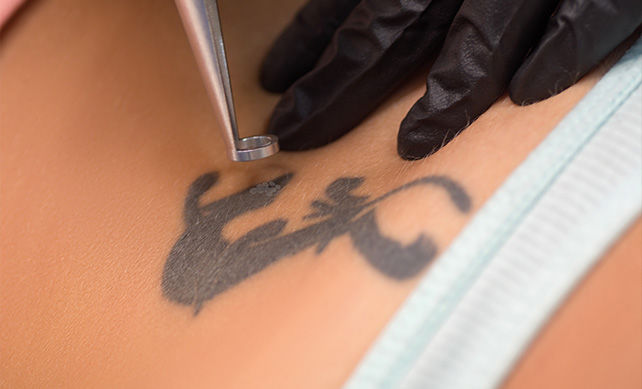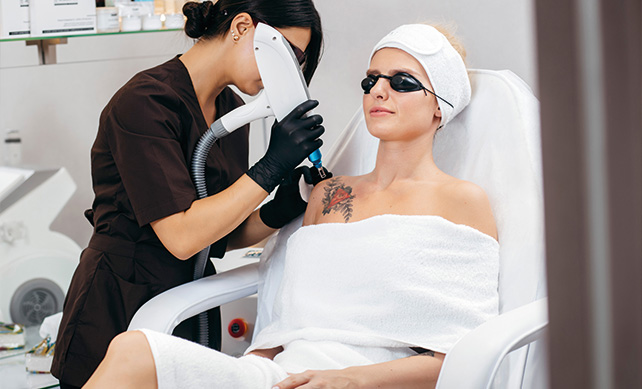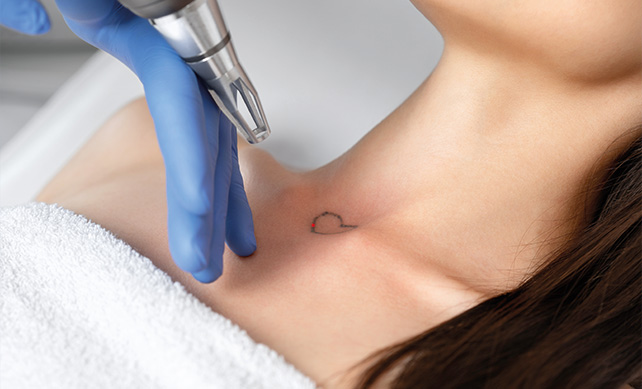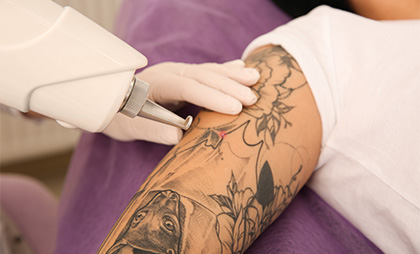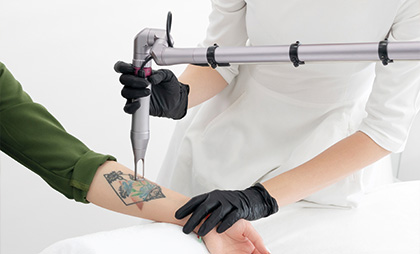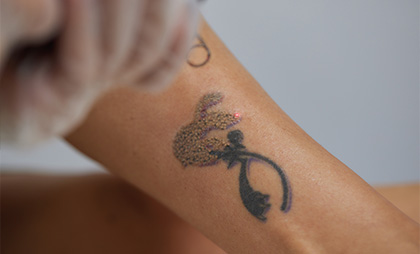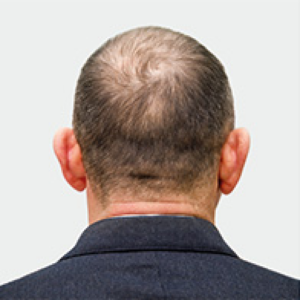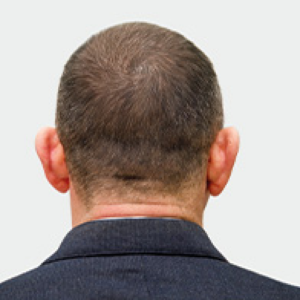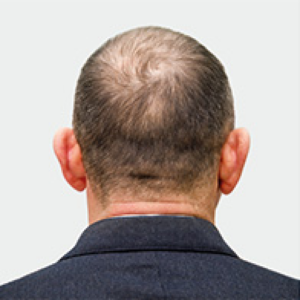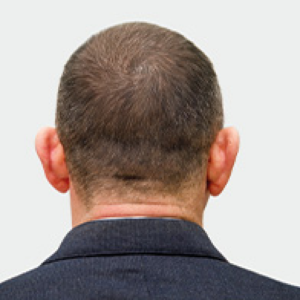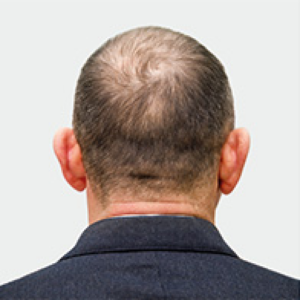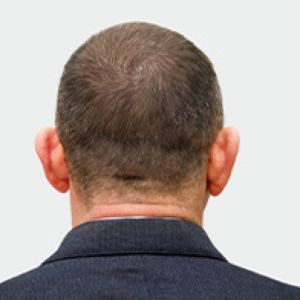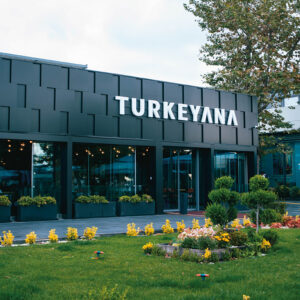Laser Tattoo Removal
What Is Laser Tattoo Removal
Laser tattoo removal is a noninvasive method for removing or fading unwanted tattoos. It uses advanced laser technology. A laser device emits short pulses of high-intensity light during the laser tattoo removal treatment. This laser lighting penetrates the skin and targets the tattoo ink particles. The color of ink absorbs the laser energy, causing it to break down into smaller fragments. Which are then naturally destroyed by the body’s immune system. It needs multiple treatments to completely remove a tattoo. This process can require multiple sessions over several weeks or months. This depends on factors like The tattoo’s size and color. The age of the patient and the location of the tattoo. The patient’s skin type and overall health.
What Are The Laser Tattoo Removal Machines
Laser tattoo removal machines are specialized devices designed to break down and remove tattoo ink from the skin. These machines utilize different lasers that emit specific wavelengths of light to target different ink colors effectively. Some popular types of laser tattoo removal machines include:
-
Q-switched lasers:
These are the most commonly used machines for tattoo removal. They emit high-energy, short pulses of light that break down the ink particles. Q-switched lasers come in various types, each with a specific wavelength, such as Nd: YAG, Ruby, and Alexandrite.
- Q-switched Nd: YAG laser: This laser has two wavelengths (1064 nm and 532 nm). The 1064 nm wavelength targets dark colors, like black and dark blue. Meanwhile, the 532 nm wavelength targets red, orange, and some yellow tones. They effectively treat a wide range of tattoo ink colors.
- Q-switched Ruby laser: This laser has a wavelength of 694 nm and effectively removes blue, green, and black inks. However, it is less effective on darker skin tones due to the risk of pigmentation changes.
- Q-switched Alexandrite laser: With a wavelength of 755 nm. This laser is suitable for treating green, blue, and black inks. It is more effective on lighter skin tones and may not be suitable for darker skin types.
-
PicoSure laser:
This picosecond laser emits ultra-short pulses of light. It results in faster ink breakdown and potentially fewer treatment sessions than Q-switched lasers. PicoSure laser effectively treats many ink colors, including stubborn blue and green hues. Consulting with a qualified and experienced practitioner when considering tattoo removal is essential. He can determine the most suitable laser type and treatment plan based on the tattoo’s characteristics and the patient’s skin type.
Everything is to assure you that you are in safe hands…
Stages Of A Laser Tattoo Removal Procedures
Whether you have a big or small tattoo, there will be a number of treatments for laser removal. The stages of a laser tattoo removal procedure typically include the following:
- Consultation: Before the treatment, the patient will have a consultation with a qualified practitioner to …
- Discuss their expectations.
- Assess the tattoo.
- Determine the most suitable laser type and treatment plan.
- The practitioner will also review the patient’s medical history and address any concerns or questions.
- Preparation: On the day of the treatment, the patient’s skin will be thoroughly cleansed to minimize the risk of infection. A topical numbing cream or local anesthesia may reduce discomfort during the procedure.
- Laser treatment: The practitioner will use the appropriate laser machine to target the tattoo ink. The laser emits short pulses of high-intensity light that penetrate the skin and break down the ink particles. The patient may feel like a rubber band snapping against the skin during the procedure.
- Cooling and soothing: After the laser treatment, the practitioner applies a cooling device or cold compress to soothe the treated area. This reduces swelling and discomfort.
- Post-treatment care: The practitioner will provide instructions for post-treatment care that ensure zero side effects. It includes applying an antibiotic ointment and a sterile dressing. Keeping the area clean and dry. Avoid sun exposure and refrain from swimming or soaking the treated area for a specified period.
- Follow-up and additional sessions: The patient will likely need multiple sessions spaced. This will last for several weeks or months apart to achieve the desired results. A follow-up appointment will be scheduled later on. To assess the progress and determine if any adjustments to the treatment plan are necessary.
FAQ
How much is laser tattoo removal?
The cost of laser tattoo removal can vary widely depending on several factors, such as the size, color, and location of the tattoo, as well as the number of sessions required to achieve the desired results. On average, laser tattoo removal can cost anywhere from $200 to $1000 per session, but some larger or more complex tattoos may cost more.
How does laser tattoo removal work?
Laser tattoo removal works by using high-intensity light energy to break up the ink particles in the tattoo. The laser light penetrates the skin and is absorbed by the ink, causing the ink to break down into smaller particles. The body’s immune system then flushes out these particles over time, resulting in a fading of the tattoo.
Does laser tattoo removal hurt?
Laser tattoo removal can be uncomfortable, and some people may experience pain during the procedure. However, most providers use numbing cream or other methods to help minimize discomfort.
Does laser tattoo removal leave scars?
In most cases, laser tattoo removal does not leave significant scarring. However, some people may experience slight changes in skin texture or color in the treated area. It’s essential to follow your provider’s aftercare instructions to help minimize the risk of scarring.
Is laser tattoo removal painful?
Laser tattoo removal can be uncomfortable, and some people may experience pain during the procedure. However, most providers use numbing cream or other methods to help minimize discomfort.
Is laser tattoo removal safe?
Laser tattoo removal is generally considered safe when performed by a qualified and experienced provider. However, as with any medical procedure, there is always a risk of side effects or complications, such as blistering, scarring, infection, or changes in skin texture or color. It’s essential to choose a reputable provider and follow all aftercare instructions to help minimize the risk of complications.
How long does laser tattoo removal take?
The length of time it takes to remove a tattoo with laser therapy can vary depending on several factors, such as the size, color, and location of the tattoo, as well as the individual’s skin type and immune system. Most people require multiple sessions spread out over several months to achieve optimal results.
How effective is laser tattoo removal?
Laser tattoo removal is generally considered to be effective, but the results can vary depending on several factors, such as the size, color, and location of the tattoo, as well as the individual’s skin type and immune system. Some tattoos may be more challenging to remove than others, and some may not be fully removed even after multiple sessions. However, most people see a significant fading of the tattoo over time with laser therapy.




BLOG & NEWS
BLOG
Which Breast Augmentation Implant Is the Best?
see all

NEWS
TURKEYANA REDEFINING THE CONCEPT OF BEAUTY
see all


















